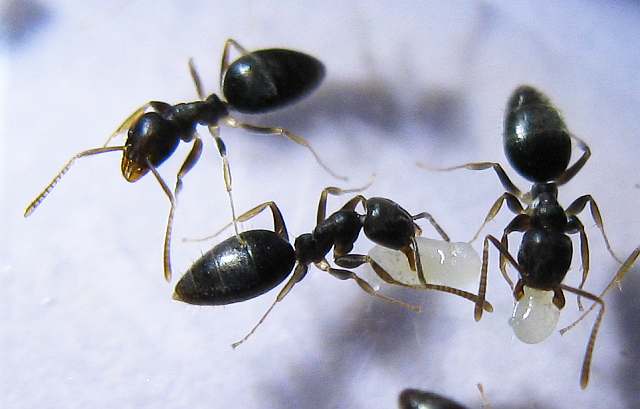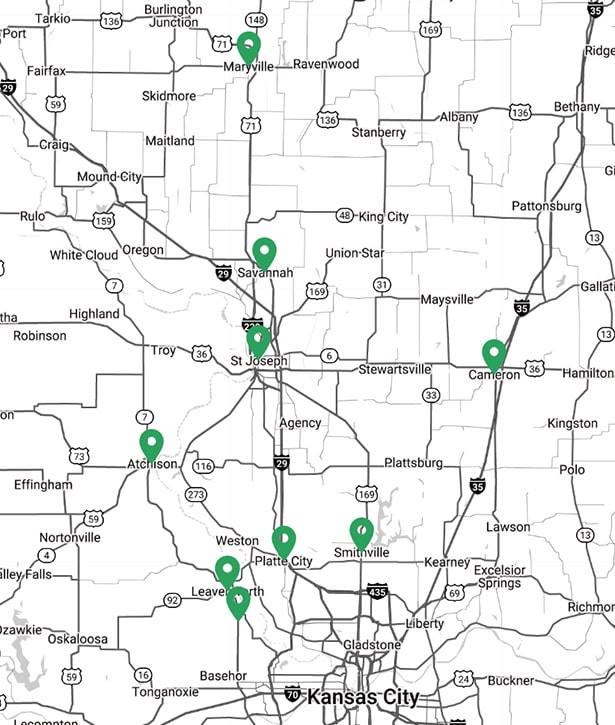
The ant life cycle has four distinct and very different life stages: egg, larvae, pupae and adult. This is known as complete metamorphosis. It generally takes from several weeks to several months to complete the life cycle, depending upon the ant species and environmental factors. Eggs A female ant that successfully mates with a male ant will become a queen ant that lays eggs. Fertile queens select a sheltered place to begin a nest (colony) and begin laying eggs. Ant eggs are very small – only about a half of a millimeter in diameter. The eggs are also oval, white and transparent. Larvae After about 1-2 weeks in the egg stage, a grub-like, legless ant larvae hatches. This stage has a voracious appetite, and the adult ants spend much of their time feeding the larvae with food and liquids they digest and regurgitate. Pupae After the larvae molts and shed their skin, they change into the pupal stage. Pupae appear somewhat like adults except their legs and antennae are folded and pressed against the pupal body. Initially, ant pupae are usually white, but slowly become darker in color as they age. Depending upon the ant species, pupae may be housed in a protective cocoon. Adult Once the pupal stage is complete, the adult ant comes on the scene. At the time of emergence, the adult ant is fully grown, but darkens in color as it ages. Adult ants are one of three different colony castes; queens, workers or males. Queens are fertile females that lay all the eggs in a colony. Workers are females that do not reproduce, but do gather food; feed the larvae; and maintain and clean the nest. Workers are wingless, and it is the worker stage that is seen foraging around for food or defending the colony from intruders. The male ants are winged, but their only job is to mate with the queens during the swarming process.
The white-footed ant, Technomyrmex difficilis Forel, has become an important pest ant in Florida. Previously identified as albipes (Fr. Smith), it was correctly identified in 2007 as T. difficilis (Bolton 2007). The W.F. Ant is a medium small (2.5-3 mm long), black to brownish-black ant with white-ish feet. Population: Perhaps the key to the W.F. Ant’s evolutionary success is its ability to reproduce in large numbers, especially considering that it doesn’t have the obvious defensive capabilities of many other ants such as a venomous sting, chemical sprays, or soldiers with strong, biting mandibles.
Colony population estimates vary from 8,000 to 3 million individuals. W.F. Ants are considered to be a nuisance pest because they are frequently observed foraging in kitchens, bathrooms, and the exterior of buildings. W.F. Ants feed on plant nectars and honeydew produced by sap-sucking insects such as aphids, mealybugs, and scales. W.F. Ants are known to protect honeydew producers, which has caused problems in agricultural production in some areas.
Locally owned, and family operated, committed to the St. Joseph Missouri community for over 50 years
Our certified and extensively train technicians ensure effective, safe pest management
Over five decades of proven Pest Control experience and unparalleled customer satisfaction.
Custom pest management plans tailored to your specific needs for effective, targeted results.
Guaranteed pest control solutions that ensure lasting results in peace of mind
If you don’t see your city on the map, that doesn’t mean we can’t service your area. Please contact us if you have any questions.
Call Us Today
Learn more about our Community Center

14375 US-71, Savannah, MO 64485